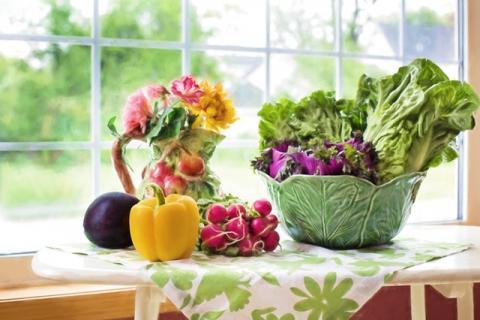
The price of food has become ridiculous these days. Buying organic, whole healthy foods strains our already squeezed pockets. The market is saturated with Genetically Modified Organisms (GMO), and with Bayer’s acquisition of Monsanto, who knows what the future holds for our food supplies. This merger could create a monopoly on the market, upping the price of food for both farmers and consumers. It appears to be a worrisome turn of events – for example, less variety in our food, says Bill Giebler from The New Hope network: “In the last century…the U.N. Food and Agriculture Organization estimates a 90 percent reduction of varieties in cultivation—a near extinction of what feeds us.”
This raises the question: were GMOs created to feed the world? According to Jeffery M. Smith, founder of the Institute for Responsible Technology, the answer is, in a nutshell: no.
GMOs were created when Monsanto’s patent on the popular herbicide Roundup ran out in 2000. They created Roundup-ready crops for farmers, which would extend the patent on the Roundup. Unfortunately, a new 14-year study found that these GMO products increased the use of herbicide by 28% -- the opposite of what we actually want happening.
However, where there is a will, there is always a way. While we are not at the stage of saying hasta la vista to the supermarket just yet, we can significantly reduce the bill by using resources we already have.
Over the next serval articles, we'll explore 21 foods we can grow from scraps we would otherwise throw away.
Before Getting Started
Tips to Keep in Mind:
- Use organically grown produce to reduce the chemical treatments in the plant
- It is best to use products with the heirloom (older, open-pollinated varieties handed down from previous generations) label on it to prevent planting hybrids
- Hybrids will grow but you cannot be certain of the results
- If you are growing them in pots as opposed to in the garden, give the plants some liquid fertilizer at half strength. Here are natural fertilizers you can make in your kitchen.
- Have fun
Green Salad Garden: Vegetable Section
First up, let us look at some greens: Lettuce, Cabbage, Bok Choy and Spinach.
Average Cost Per Pound In U.S. and Midwest Region
Lettuce (Iceberg) = $0.92
(Romaine)= $1.51
Cabbage= $0.51
Bok Choy =$0.98
Spinach =$1.23
Time to Reach Maturity
Lettuce- 70-85 days
Cabbage- 70 Days
Bok Choy- (Baby Variety): 30 Days
(Full Leaf): 4- 6 Weeks
Spinach- 6 Weeks
Scraps To Garden:
- Place loose leaves/base of lettuce, cabbage or bok choy in a bowl of just enough water to cover the bottom of the container
- Leave the bowl with the leaves in a room where it is getting adequate sunshine
- Mist the leaves with water daily for 3-4 days
- After 4 days you should see roots appearing and some new leaves
- When you see the roots and leaves it is time to transplant them to the soil
Lettuce:
- Plant rows of chives or garlic between lettuce to help control aphids if planting outdoors
- Plant the lettuce rows 12-15 inches across
- If the lettuce leaves begin to wilt, spritz them with water
- Use organic fertilizer 3 weeks after planting
Cabbage
- Mulch the soil thickly to retain moisture
- Plant them in rows 24 inches apart
- Add 2 inches of mulch per week and water them
- Fertilize 3 weeks after planting
- Harvest when the head reaches the desired size and is firm
Bok Choy
- Plant in rich, loose, well drained soil
- The soil should have a pH level of 6-7.5
- Plant in rows about 25-30 inches apart
Spinach
- Plant in well-drained, fertile soil with a pH of 6-7.5.
- Plant 1 inch deep, with rows 12-18 inches apart
- Water and mulch to keep plants moist
Fun Facts:
- Lettuce is a member of the sunflower family
- Lettuce for dinner helps you to calm down and reduce stress
- Cabbage is one of our oldest vegetables
- Cabbage juice helps in treating stomach and intestinal disorders
- China has been cultivating Bok Choy for over 5 millennia
- Bok Choy ranks among the top cancer fighting foods
- Spinach is related to beets and chards
- Spinach was used in medieval times to extract pigment for ink and paint
Tomato
Average Cost Per Pound In U.S. and Midwest Region
$1.82
Time to Reach Maturity
Between 49-100 days depending on the type of tomato
Scraps To Garden:
- Take the seeds out and let them dry; you can place them on a paper towel
- After they are dry, put the seeds in potting soil and leave them until you notice about 6 inches of growth to transplant
- Plant in a spot that gets at least 6-8 hours of sunlight
- Use soil with a pH level of 6.2-6.8
- If using a pot for tomatoes, use sizes between 18- 24 inches, depending on the type of tomato plant
- When planting in the garden space them between 2-3 feet apart
- For added nutrients and to retain moisture you can mix in organic fertilizer and compost to the soil before planting
- To ensure strong roots and create drought resistance bury 2/3 of the stem when planting
- Water regularly -- if the top soil is dry, the plant needs water
- Put up stakes or cages to loosely tie the stem of the plant when growing to keep the tomatoes off the ground
Fun Facts
- A drink of tomato juice with basil helps to ease headaches
- Tomatoes were categorized as a vegetable by a Supreme Court ruling in 1893 in the United States, legally ending the debate of fruit vs. vegetable
“It's bizarre that the produce manager is more important to my children's health than the pediatrician.” Meryl Streep
Resources:
- http://www.gardening.cornell.edu/homegardening/scene4c19.html
- http://www.almanac.com/plant/lettuce
- http://topfoodfacts.com/8-interesting-facts-about-cabbage/
- http://www.ers.usda.gov/media/2023016/eb27.pdf
- https://draxe.com/bok-choy/
- http://www.motherearthnews.com/organic-gardening/vegetables/heirloom-vegetable-advantages.aspx
- http://www.bls.gov/regions/mid-atlantic/data/AverageRetailFoodAndEnergyPrices_USandMidwest_Table.htm








